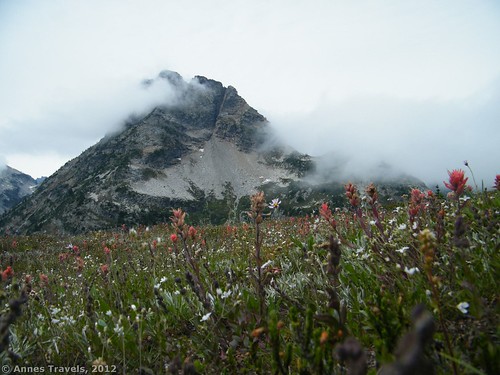
Wildflowers near Maple Pass, North Cascades National Park, Washington
I just got back from a trip to the wilderness. It was a good time of being with my family; we made more than just a few happy memories 🙂 And hiking through the wilderness – some of it fairly remote – brought before me again just how much of His character God has put into the things He created.
It’s obvious to say it about a human being – “God created man in his own image” (Genesis 1:27). The sin nature has done its part to rob us of that image, but still, within every human is God’s image, a picture or reflection of God, Himself.
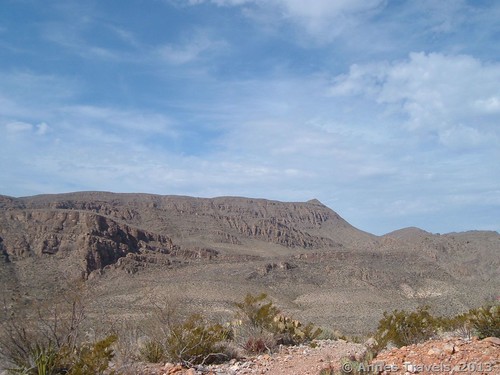
Views similar to Lake Mead along the Mexican boarder along the Marufo Vega Trail in Big Bend National Park, Texas
But in the natural world, I also saw God’s character and personality. Driving along near Lake Mead, the sagebrush in the desert earth, cracked for lack of moisture, I saw His goodness and faithfulness in time of what we would consider lack – He provided for these plants the necessary means of survival. He wasn’t testing their endurance or teaching them a lesson. He had given them all they needed – the water conservation, the rain in season, the physical makup – to not only withstand the conditions, but to thrive there in the desert. They had a special grace and, while it would seem strange to a meadow wildflower, they had a beauty not found in the more lush places.
On the California coast, Point Reyes is the 2nd foggiest place in North America, experiencing over 200 days of total fog each year, not to mention being the windiest place on the coast. Yet tucked within the misty grasses, I found gumplant, like lovely yellow sunflowers, and little pink beach morning glories, the vines spreading happily below the tops of the seeding grass. They were not suffering for lack of sun, or pining away, holding on for dear life against the winds and sea spray. They were flourishing in the environment they had been groomed to meet; full of life because they had what was necessary for their unique environment.
God is looking to give us what we need in our current and future situations. He’s not looking for us to merely “get by” or “withstand the test”; He came to give us life, and life abundantly (John 10:10).
If I put one of those sagebrush on Point Reyes, it would not flourish. It was made for sun and heat and lack of precipitation, not for mist and clouds and sea spray. Yet sometimes we feel God has taken us as sagebrush and placed us on a misty ocean headland. But we were called to life abundantly.
God has what it takes for you to flourish in your current environment. His joy is to share that with you so that it is not the environment that overcomes you, but that you overcome your environment (John 16:33), so that, like a beach morning glory you can thrive among the grass on the misty headland. Instead of crying out “Lord, save me from this headland”, maybe we should be asking God what the tools are that He has for us to flourish in our current environment.

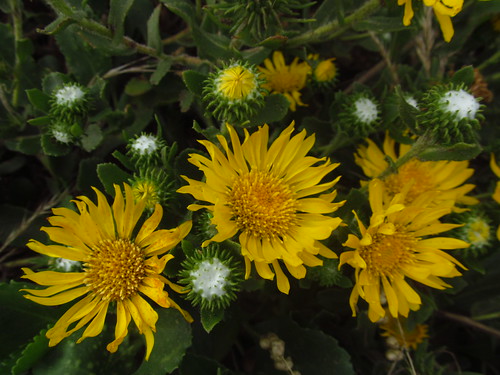
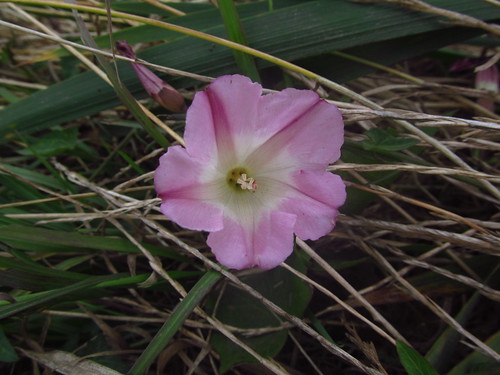
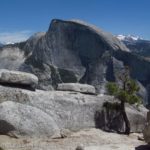
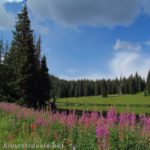
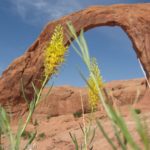
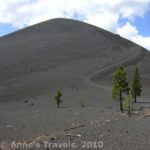
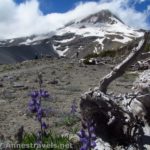
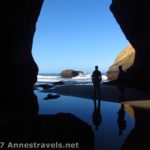
Anne, thank you, I love your website. I have a couple of questions about UTAH if you have a minute. My grandmother and I are going out on August 12th, starting at Capitol Reef, and ending up in Bryce and possibly Zion, hitting Kodachrome Basin somewhere in the middle – maybe? My question is are you familiar enough with hiking these places to make suggestions for she and I so that we get the most out of our trip. Gma is 79yrs old and more than capable as far as hiking goes, just maybe not too long of hikes or too steep.
What do you think?
Thanks so much for any suggestions you may have 🙂
Mic
Hi Mic! So glad you like the site 🙂 Definitely don’t miss Bryce – the Queen’s Garden / Navajo Loop (3.6 miles total) is epic, and if you want something slightly longer, add on the Peek-a-boo Loop for a 6 mile double-loop hike. For a trail that has great views, is flat, and is variable in length, try the Rim Trail, especially between Sunrise and Sunset points. In Capitol Reef, scenic drives are a great option, though the orchards will likely also be in harvest for peaches and pears – you can eat as many as you want in the orchard free of charge, and the prices tend to be quite reasonable if you want to take some with you (call the Fruit Hotline or check with the visitor center before you go). In Zion, don’t miss the Riverside Walk (2 miles RT) that takes you up the canyon along the river (you can extend the hike by walking up the river – which is beautiful and iconic – but I highly recommend close-toed shoes or watershoes and a hiking pole, not to mention steady feet, if you want to walk further than the end of the paved trail). Other great hikes include Weeping Rock (0.4 miles RT), the Watchman Trail (3 miles RT), and – if you don’t mind a bit of steep switchbacks – the West Rim Trail up to the junction with the Angel’s Landing Trail (4 miles RT; the views from here are some of the best I’ve seen in the park). Hope that helps; you’re going to a beautiful area so you’ll be sure to see amazing things no matter where you end up 🙂